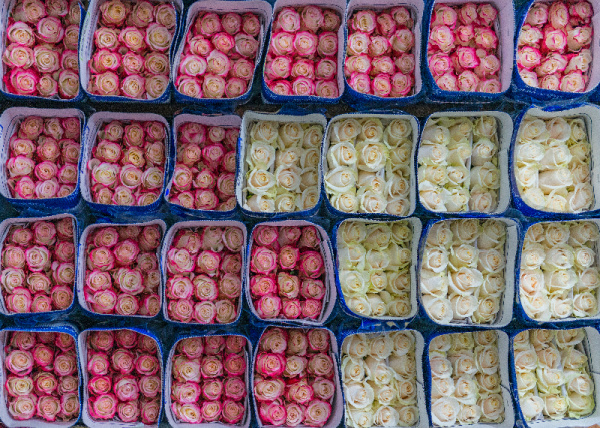U.S. Flower Imports in Five Charts

It’s Valentine’s Day – so let’s take a look at some fresh-cut flowers data. Read on for a review of U.S. flower imports.
Fresh Cut Flower Trends
Figure 1 shows the value of annual U.S. cut flower imports. In 2021, imports hit a record $1.75 billion, up 39% from 2020. Over the last twenty years of data, the value of imports has increased at a mostly steady pace, an annualized growth rate of 6.1%. However, with these data reported on a dollar basis, it’s unclear how much of the annual changes are due to volume versus prices.
Flower imports tend to follow the U.S. economy, slumping in 2008 and 2009 during the Great Recession and again in 2020 during the pandemic.
For a closer look at pandemic-related activity, Figure 2 shows monthly values for 2017 to 2021. These data capture how flower imports plummeted in March 2020 but recovered by mid-summer. For 2021, activity was well-above normal levels, especially in April and May.
Also visible in Figure 2 is the seasonality of flower imports. Figure 3 shows the average distribution of monthly activity from 2017 and 2021. As one would expect, Valentine’s Day is a major driver. Specifically, imports in January and February account for 23% of annual activity.
This year seems to be following the trend. Miami International Airport handled 300,000+ flowers daily in the build-up to Valentine’s Day 2022. This airport receives 91% of all flowers imported into the U.S.
Imports are also strong in April and May – perhaps a combination of Easter, Mother’s Day, and general spring enthusiasm.

Figure 1. Value of U.S. Cut Flower Imports, Annual, 2002-2021. Data Source: U.S. Census Bureau.

Figure 2. Value of U.S. Cut Flower Imports, Monthly, 20017-2022. Data Source: U.S. Census Bureau.

Figure 3. Distribution of Annual U.S. Cut Flower Imports, 2017-2021. Data Source: U.S. Census Bureau.
Roses are Red
In 2021, the U.S. imported $730 million worth of roses, which accounted for 42% of all flower imports that year. For last year’s Valentine’s season – January and February – roses were 54% of import activity.
Figure 1 shows the annual value of rose imports since 2007. Again, there has been a steady increase over time, with declines observable following the economic contractions of 2008/2009 and 2020.
Figure 2 shows the average distribution of rose imports. While the seasonal patterns are similar to all cut flower imports, roses are even more popular around Valentine’s Day. Specifically, January and February activity accounts for 31% of annual imports, compared to just 23% of all flower imports (Figure 3).

Figure 4. Value of U.S. Rose Imports (Fresh Cut), Annual, 2002-2021. Data Source: U.S. Census Bureau.

Figure 5. Distribution of Annual U.S. Rose Imports (Fresh Cut), 2017-2021. Data Source: U.S. Census Bureau.
How Much Does Trade Matter?
These trade data raise a question: How significant are flower imports? There are many possible ways to consider this, but we started with the 2019 Census of Horticulture, which provided data on domestic fresh cut flower production. For that year, the value of fresh-cut flower production in the U.S was $383 million. A back-of-the-envelope estimate of adding domestic production and imports concludes imports accounted for roughly 77% of fresh-cut flowers supplies in 2019. Roses are similar, with imports accounting for 75% of total supplies.
Combined with the U.S. lacking the climate for domestic cocoa production, these data highlight the significant influence that global trade has on our Valentine’s Day gifting traditions.
Wrapping it Up
While most readers are not directly involved with the fresh-cut flower segment of the U.S. economy, we hope this week’s article is insightful. Perhaps unique in this market is the seasonality and how closely these data follow the broader economic trends in the economy.
It’s also interesting to consider how cross-sector supply chain disruptions related to the pandemic and labor availability are affecting flower imports. After the flower market crashed in 2020 due to canceled events, the 2021 wedding boom led to a global flower shortage. The industry is also beginning to grapple with the effects of climate change.